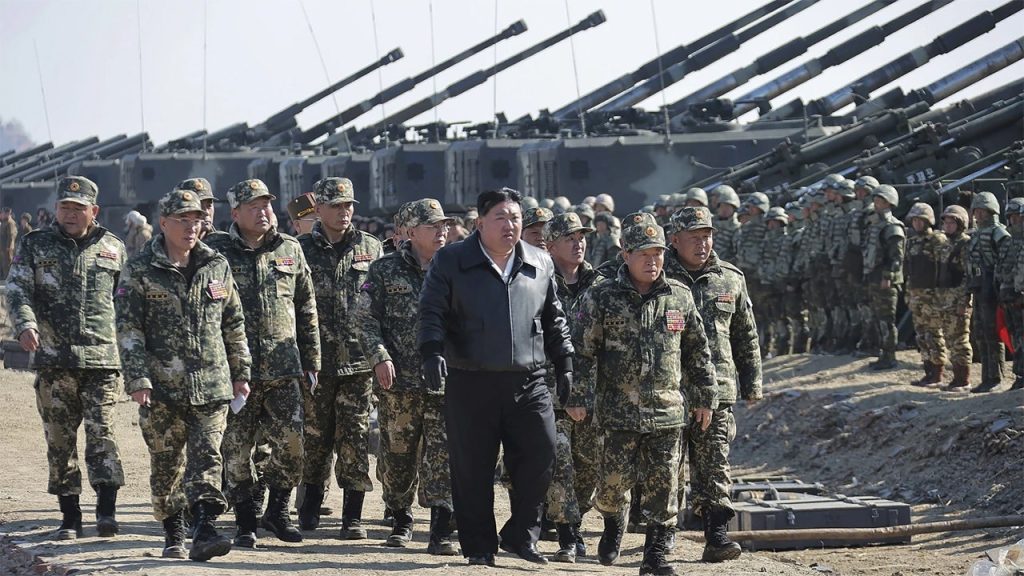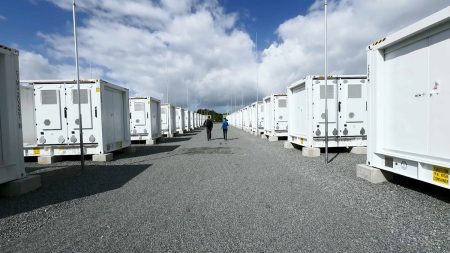North Korea has announced its readiness to launch strikes against South Korea after accusing its neighbor to the south of flying drones over Pyongyang and dropping propaganda leaflets. South Korea has not confirmed these actions, but has warned it will respond if its people are threatened. North Korea claims that South Korea has flown drones into its territory three times and dropped leaflets over the capital city. In response, North Korea’s Defense Ministry has ordered its military units near the border to be prepared to open fire if similar incidents occur.
The tense situation between North and South Korea has been ongoing since a U.S.-led diplomacy to end North Korea’s nuclear program fell apart in 2019. North Korea has since increased its nuclear arsenal and made repeated threats to attack South Korea and the U.S. with nuclear weapons. Despite the fiery rhetoric, experts believe it is unlikely that North Korea will launch a full-scale attack as the U.S. and South Korean forces are superior to the North’s military. North Korea recently announced plans to permanently block its border with South Korea and build defense structures in response to what it called “confrontational hysteria” by South Korean and U.S. forces.
In addition to the recent drone and leaflet incidents, North Korea has also engaged in a tit-for-tat exchange of trash-filled balloons with South Korea. North Korea has launched balloons carrying paper, plastic bottles, and other household garbage across the border, while South Korea has retaliated by blasting propaganda messages and K-pop songs towards the North using loudspeakers. The two Koreas have been engaged in Cold War-style tactics throughout the year, with North Korea accusing South Korean activists of flying anti-North Korean propaganda leaflets across the border.
The escalating tensions between North and South Korea have raised concerns about the potential for conflict in the region. North Korea’s threats of military action and its increased nuclear capabilities have put neighboring countries on high alert. The situation is further complicated by the involvement of the U.S. and its allies, who have a vested interest in maintaining peace and stability in the region. The ongoing exchange of provocations and threats between North and South Korea highlights the volatile nature of the relationship between the two countries and the challenges of finding a peaceful resolution to their long-standing conflict.
The recent incidents involving drones, leaflets, and balloons are just the latest in a series of provocations between North and South Korea. The use of unconventional tactics such as trash-filled balloons and propaganda leaflets reflects the ongoing psychological warfare between the two countries. The situation is further complicated by the involvement of outside actors such as the U.S., which has a significant military presence in the region. As tensions continue to escalate, the risk of a miscalculation or provocation leading to a larger conflict remains a concern for all parties involved.
As the situation on the Korean Peninsula remains tense, it is imperative for all parties to exercise restraint and engage in dialogue to prevent further escalation of hostilities. The use of military threats and unconventional tactics only serves to heighten tensions and increase the risk of conflict. Diplomatic efforts must be prioritized to address the underlying issues driving the animosity between North and South Korea. The international community must also play a constructive role in promoting peace and stability in the region. Only through dialogue and cooperation can a lasting resolution to the conflict be achieved.













